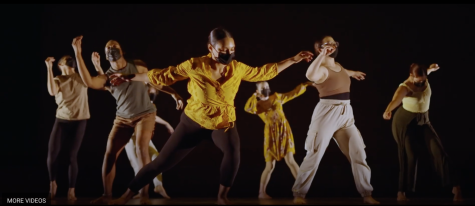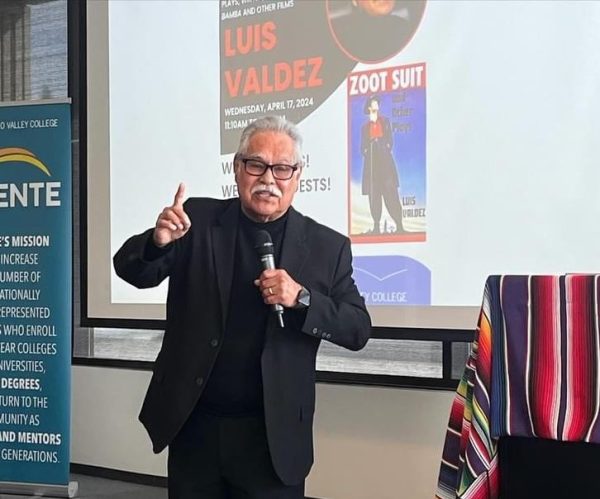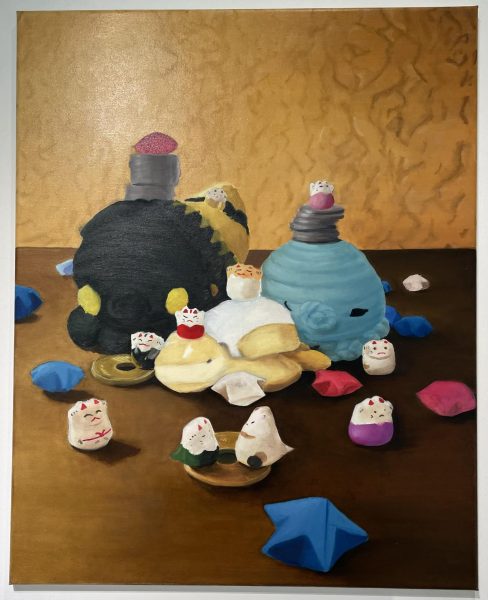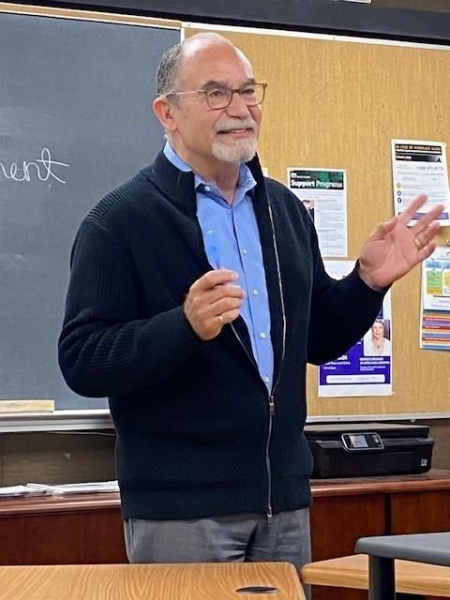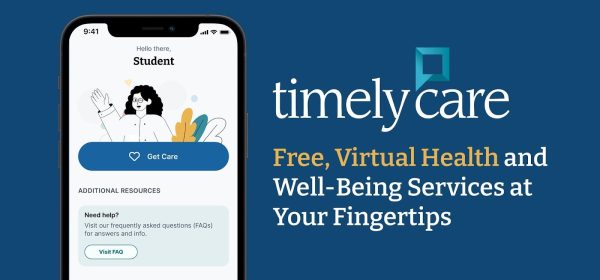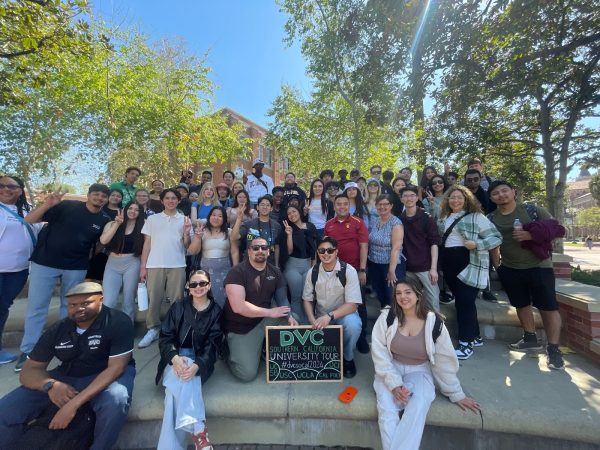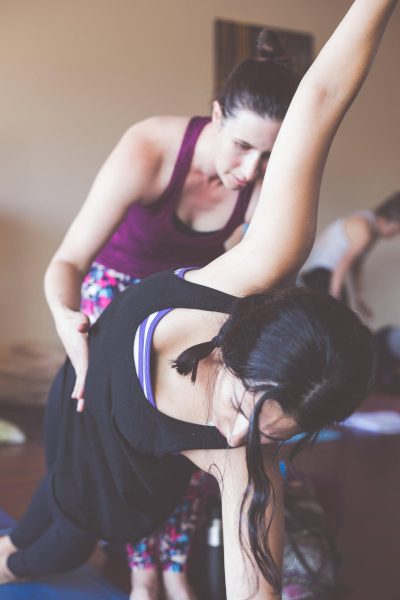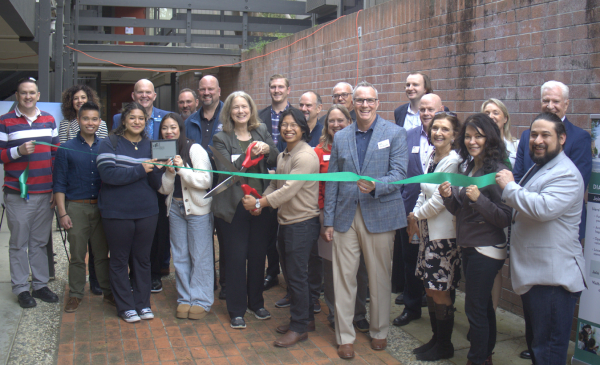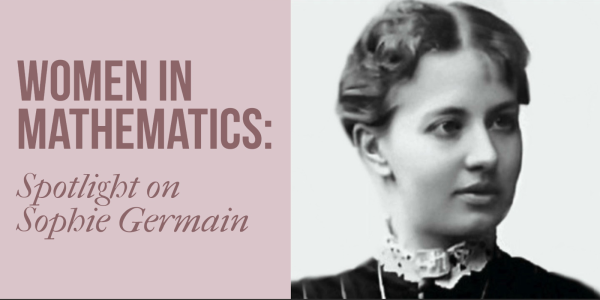“DVC Dance is Back!”: Facing Pandemic and Enrollment Challenges, School’s Dance Program Is Regaining its Feet
On a warm Thursday afternoon just before last Halloween, I walked through the Diablo Valley College Pleasant Hill campus quad and sat down at one of the tables outside the Student Services Center. Less than a dozen people were within sight at first. But then, as if from thin air, the haunting sounds of Michael Jackson’s Thriller crept out of a large speaker. Before I knew it, a flash mob of dancers had assembled and were moving in unison.
As the song built, more dancers joined in the choreography. Turns, steps and iconic moves from the 1983 music video captivated the crowd, and as the impromptu performance closed I looked around at what had become a cheering, clapping audience. Then, as quickly as they had shown up, the dancers disappeared. An excitement lingered in the air, and I realized how happy I had felt witnessing the spirited show.
It’s been quiet on the DVC campus as of late. More students are now attending in-person classes, but for those craving connection, community and what we used to call the “college experience,” it’s been hard to find – which is why the creative, inspiring work of the school’s dance department feels as timely and important as ever.
Across the college district, enrollment has been low as a result of the pandemic. And while the shift to online learning has worked for many departments, that hasn’t been the case for dance. The impact of these reduced numbers of students is just one of the challenges that Dance Department Chair Kimberly Valmore has had to face.
Her department has switched divisions, from Kinesiology to Arts, where a new dean was recently appointed. And even before the pandemic shut down the campus in March 2020, the Dance Department had entered a process of revitalization aimed at boosting its performance and enrollment numbers.
“It’s meant to support programs, to help identify strengths and weaknesses,” Valmore said of revitalization, a process that has helped other departments improve and grow in the past. And in fact, “really positive changes” are emerging despite COVID and quarantine requirements hampering the department’s course offerings.
“The future looks a lot brighter” now that in-person classes are in session, she added. “I’m excited because people are coming back. Bringing people on campus is part of the [solution]. If we don’t get [enrollment] numbers up, we won’t be allowed to have that future.”
The Fall 2021 semester was the first time in modern memory that DVC didn’t offer dance production classes and performance dates through the Dance Department. But that didn’t stop Valmore and her students, who came together to create the Halloween-themed flash mob after deciding collectively where, when and how to hold the performance.
“I like to collaborate with the students,” said Valmore. “It’s nice to see them work through a performance of this type, and I was really pleased by how they took the lead in problem solving.”
Part of the value of the experience, she added, was its novelty for the students. “This is the opportunity where there is no judgment, where you actually get to train and understand how movement exists and then explore for yourself.”
Mikayla Hodges, a student with a competitive dance background, said she and the other dancers strove to “have fun with the piece, but also make it clean and build character.”
Hodges, who is used to performing in front of judges, added, “It was definitely fun. It was a new experience for me. I’d never done a flash mob like that, and I definitely would like to do it again.”
Another student who has benefited from the program, even during the pandemic, is Jillian Garibaldi. After graduating with a bachelor’s degree in cognitive science, Garibaldi, 23, is now enrolled in DVC dance classes as she prepares for an MFA dance program.
“It’s very nice to be in a place where everyone is working towards the same goal, everyone is helping each other where needed, and especially where Kimberly is such a presence that you can go and ask for help when you need it, or just [ask] questions you have that are unrelated to what we are doing in class,” Garibaldi said. “It’s a really good community to be in.”
In the welcoming space that Valmore and her colleagues cultivate, students are encouraged to bring their whole selves into the studio. “Whenever I’m in [Valmore’s] classes, it always feels like I’m growing as a dancer; I’m always working on something,” said Ava Battle, a 19-year-old dance major.
“I love dance most because it is like a form of therapy in a way for me,” she said. “I struggle with expressing how I’m feeling, or I don’t find situations where I can really talk about how I’m feeling.”
Battle admitted she has suffered bouts of depression and anxiety, and said “dance is a way for me to cope with those things.”
For others in the program, like Garibaldi, dance also serves as a more fluid channel of communication than traditional classes. “Well, first of all it feels good to move, that’s the main thing,” said Garibaldi. “I’m not fantastic at public speaking and things like acting, in a sense of memorizing lines and repeating them, is very stressful to me. But I feel when it’s not my voice that I am using, I’m much better at communicating things that I would like to communicate.”
Coinciding with lower enrollment numbers, the school’s dance department has seen a decline in faculty members and in the variety of courses offered during the past decade – partly due to broader academic trends and also because the state no longer allows students to repeat classes.
“When the State of California decided that we couldn’t repeat these dance classes, that you only need to take so many and then you’re good, they missed the point that this is [about] lifelong learning,” said Valmore. “[Dance is] not a one-time thing, and that’s the beauty and the charm of it.”
In recent years, Valmore has worked hard to develop a complete program with just half the number of dance teachers DVC once had. In addition to her classes in ballet, jazz, modern and Broadway dance, Valmore is joined by hip-hop and urban funk teacher Joey Hernandez, and salsa and Latin dance teacher Erica Angelakos.
Even as cutbacks have shrunk the department, she said, the faculty remains tight.
“I love, love, love Erica – we’re really blessed to have her. And Joey really knows the minutiae of everything that has to do with [hip-hop],” said Valmore.
A new instructor joining the department this fall, Melissa Payne, holds a PhD in education and has danced with the Oakland Ballet. “Melissa is a definite find. I can’t wait for students to experience her,” Valmore added.
Through the social and partnering aspects of salsa and Latin dance class, Angelakos said she took on the challenge of how to teach safely during the pandemic. “We wear gloves, we wear masks. Nobody has had anything, everyone is vaccinated,” she said. “I want people taking dance for fun, because that’s the kind of dance I teach.”
A recent MFA graduate from Mills College, Hernandez said he is passionate to be more than just a dance teacher.
“I really wanted to dive into the mentorship side because I’m a first generation, low income individual who was able to get a college degree. No other individuals in my immediate family have [that],” he said.
“I think that’s where I come in as an educator who has diversity in their dance training – that I can really reassure [you] no matter what your practice is, whatever your primary form is, there is room for you in some way, shape or form. You just gotta kinda figure it out, and that’s the beauty of dance,” he added. “I reeducate myself constantly with what is new, what is trendy. I still actively dance and take class – I have to because the students are always changing my form.”
Recalling her experience taking Hernandez’s class last fall, dance major Battle said, “I’ve learned so much from that class and I’m definitely taking it again next semester.”
In Valmore’s words: “DVC Dance is back!” And it’s time for students to find their groove. As Garibaldi said, “If you’re looking at classes and hesitating [about dance], it’s really worth it and I would highly suggest just going for it.”
“Just bite the bullet and go, because not only do you meet a lot of really nice people, but you also make a lot of good memories,” she added. “And you learn a lot of life stuff that you don’t realize can help you in the long run – like creativity. It’s something that has helped me and I hope it can help others in either small or big ways.”
While the future of dance at DVC may remain unknown, people’s need to dance is undeniable, Valmore said.
“There are students who need to be around each other. Last spring we were online for part and in-person for part. Some students said they were starting to get really down and when they showed up and we danced outside, they had so much positivity and energy.”
Angelakos said of the revitalization, “I just hope that they give dance a chance, because you just can’t expect things to be roaring right now because people are still being cautious.”
For Valmore, who is working to bring the department’s revitalization to a successful finish, it’s important to measure both quality and quantity as DVC’s diverse, gifted student demographic rebounds after two years of isolation.
“We need to ride the wave of decision-making based on the pandemic,” Valmore said. “Numbers are one thing, [but] commitment to the arts is something to think about. We’re coming out of it. Allow us to come out of the dark and see the light.”





































































